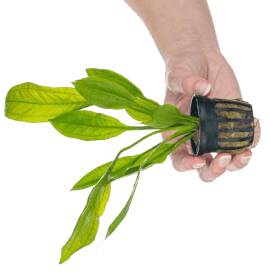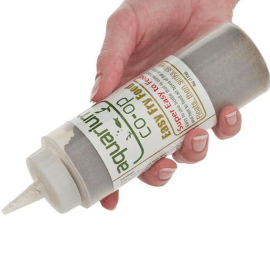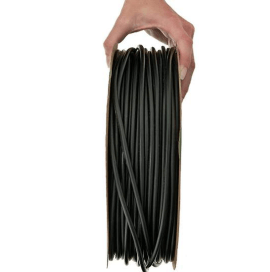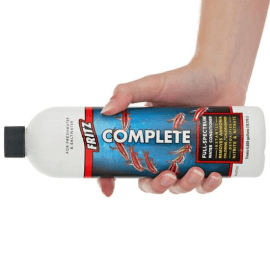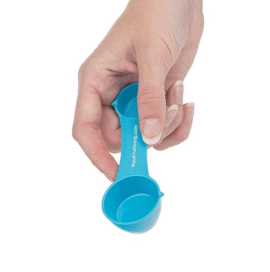Top 5 Midground Plants to Balance Your Planted Aquarium
When creating a planted tank, the type of plants you choose and where they are placed can make a big difference in the overall appearance of the aquarium, especially once the plants have grown in. The most balanced-looking tanks tend to have taller plants in the back of the tank and shorter plants up front. But the dramatic height difference between the two isn’t always visually appealing. This is why aquascapers use midground plants or medium-sized plants to create a visual transition from the shortest plants in the foreground of the aquarium to the tallest plants in back. This creates a more natural-looking and visually balanced aquascape as the plants appear layered or stacked.
The difference can be observed in the images below. The photo on the left uses a short carpeting species in the foreground of the tank and a tall stem plant in the back. Both plants are visually appealing in themselves; however, the dramatic height difference casts a shadow in the middle of the tank and the eye is drawn there. The photo on the right uses similar plants: a short carpeting species in front and tall stem plants in the background. In addition, this tank includes plants of medium height in the middle. The result is a more balanced appearance as the eye is gently drawn up from the front to the middle and up to the tallest plants in the back. It also appears more natural as plants grow mixed together in nature.

Planted aquariums with no midground plants (left) versus with midground plants (right)
To help you get started, let us introduce you to our top 5 categories of midground plants that will enhance the beauty of your planted aquarium:
1. Anubias Plants

Anubias plants
Anubias nana (or Anubias barteri var. nana) is a very moderate-sized Anubias plant, making it an ideal plant for the midground of any aquarium. What’s even more appealing about this plant is that it prefers to be attached to wood and rock, which are usually placed around the middle of the tank. Anubias nana grows via a horizontal stem called a rhizome and will send leaves upward. Even under low light, a full and bushy growth pattern can be expected. Medium-sized leaves provide the perfect transition from small plants in front to tall plants in back and add a cozy place for shrimp and small fish to take cover. Other similar-sized Anubias species that can be substituted for Anubias nana are Anubias golden, Anubias gold coin, Anubias nangi, and Anubias coffeefolia.
2. Java Fern

Narrow leaf java fern (left) and Windelov java fern (right)
Java fern (Microsorum pteropus) is always an excellent addition to any planted tank. In terms of tank placement, java fern is well suited as a midground plant due to its medium-sized leaves and the fact that it loves to be attached to wood and rocks just like Anubias species. It will provide visual impact with bright green leaves, yet it won't completely shade out the plants in the back of the aquarium.
If you are looking for more variety, java fern ‘Windelov’ offers a bit more texture due to the lace-like tips of its leaves. It tends to remain even more compact than standard java fern, so it can be used as a midground plant in smaller aquascapes as well.
3. Cryptocoryne Plants

Cryptocoryne plants as midground plants
The different color varieties of Cryptocoryne wendtii — such as tropica, green, reddish bronze, and even pink — are excellent midground plants due to their compact growing pattern and moderate leaf size. They make a great transition from the foreground of the aquarium to the back because they are medium height yet quite leafy once they’re well-established. Their wavy, crinkled leaf texture and different color variety options add the perfect visual spice to any aquarium.

Crypt lucens
Cryptocoryne lucens is a beautiful, narrow-leafed crypt which doesn’t get more than a few inches tall when fully grown. Overall, this plant seems underused, but it makes an ideal midground plant in aquascaping. It doesn’t get overly large compared to many other crypt species, and its slender leaves provide a delicate textural transition from the front of the tank to the back. When grown in, this plant has the appearance of thick grass or reeds.
4. Baby Tears

Micranthemum umbrosum
The larger baby tears plant makes a great midground plant — though it will need to be trimmed regularly to keep it looking tidy. This plant has delicate stems and round, green leaves. Cutting off the tips and replanting the stems will help give this plant a short and bushy appearance. If left to its own devices, baby tears will continue to grow until it reaches the surface as it is technically a stem plant. However, if kept pruned, its dainty, round leaves provide a beautiful midground texture.
5. Dwarf Chain Sword

Helanthium tenellum
Dwarf chain sword, or pygmy chain sword, is always a great choice because it is one of the easier grassy plants that grows quickly to create a lawn-like appearance. It will easily fill in bare spots in the aquarium and grow to a few inches tall without trimming — making it a great option for the middle section in most medium-sized aquariums. It has longer, broader leaves than foreground carpeting species such as micro sword and dwarf hairgrass, so it makes an ideal visual transition from those thinner blades of grass up front to taller species in the back of the tank.
At Aquarium Co-Op, our goal is to provide a curated collection of aquatic plants that will grow well for the average hobbyist. Browse our entire selection of midground plants to get more inspiration for your next planted tank.
